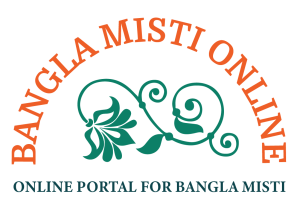THE HISTORY
Chinese Emperor Tai-Hung, it is said, as early as seventh century, sent his representative to ancient Gouda that is currently known as Bengal, to learn the art of refining sugar.
Sugar being available in plenty, making sugar lump (Mondo, Batasa, Feni, Kadma and Math) was natural. Coconut being another ingredient available easily, a number of sweets emerged like the so called Narkel Nadu (coconut laddus), Narkel Taktti (coconut and milk fudge) or say Chandrapuli, the half- moon shaped sweet.
That there were other Bengali Sweets since ancient times is evident. For example, Bipradas Mukhopadhyay published a book at the turn of twentieth century. This was a book of iconic Bengal Sweets. He writes that Pithe or Pishtaka – deep fried dumplings of dough dunked in syrup flavoured with camphor and cardamom was the popular sweet.
Similarly, Mukundaram Chakraborty’s Chandimangal, a medieval Bengali taste also refers to sweets made of condensed milk or kheer, mitha petha or sweets cakes made of rice flour and cooked in milk, Payes or rice cooked in sweet milk, Kheer Puli were other popular sweet cakes.
In the same vein, a number of medieval Bengali literature mentions a variety of sweet dishes made of by blending rice, legumes and semolina to jaggery and milk like Ashke Pithe, Khir Puli, Dugdha Chusi, Mug samali and Shoruchakli.
Krishnadas Kabiraj in his Chaityana Charitramrita a medieval classic of Fifteenth Century, also mentions items like Kheer mixed with sliced mango, sweet Yogart, Sarbhaja, Sarpuli. Dugdha Lokloki was another charming sweet made of skimmed off milk, a kind of present day Rabri was another star and delightful sweet dish.
DISCOVERY OF CHANA
The practice of using Chana arrived much later. The Portugees arrived in Bengal during the Seventeenth Century and settled of in and around Calcutta. The Portuguese tradition of making sweets with Cheese inspired the local cuisine as well. The Bengali confectioners then picked up this incredible art of cuddling milk and creating mouthwatering Sandesh and Rossogolla.
EXPANSIVE WORLD OF BENGALI SWEETS
The matrix of Bengali sweets as available today is quite expansive. At present, around 40 to 50 types of Bengali sweets are available but unfortunately, many sweets have been lost over time. The heritage of Bengali sweets is in danger in view of neglect, unavailability of craftsmen having knowledge of making traditional sweets and the economics of the trade.
BANGLAMISTIONLINE – REINVENTING OF BANGLA SWEETS
Bangla Misti Online intends to rediscover, reinvent, improvise the variety of Bangla Sweets and make it available to the customer on click of a button.
The genesis of BANGLAMISTIONLINE is to bring to the customers the diversity and wide range of iconic Bangla Sweets.
Bangla Misti Online proposes to present magic Bangla Sweets which have mesmerized Indian and Foreign customers alike.
BANGLA MISTI ACADEMY
To protect and preserve the heritage of Bengali Sweets and Desserts, www.banglamistionline is also setting up a Bangla Misti Academy to make available to the industry trained and skilled craftsmen familiar with food standards and food machineries, quality standards, modern packaging and food laws.
